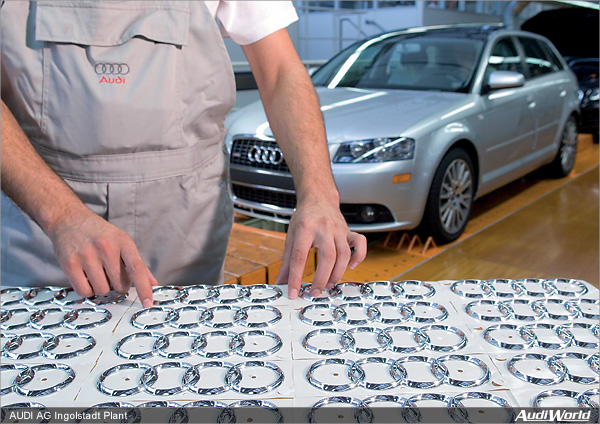Audi AG Ingolstadt Plant – The Logistics Center

Due to the extremely wide variety of versions and the setting up of worldwide production and procurement networks, the logistics processes of car manufacturers have become tremendously complex. New approaches are required in order to manage these processes. One such approach is the consolidation of material flows in industrial parks. Systems and modules are assembled outside the car makers factory gates and delivered to the assembly line just in sequence. This concept is also the basic philosophy behind the Logistics Centre, or GVZ as it is commonly known, at AUDI AGs Ingolstadt plant. In 1995, Audi began to locate the first suppliers in the direct vicinity of its plant site in Ingolstadt. The Logistics Centre was completed in just 18 months from the start of planning to the commencement of work in its halls. Industrie-Fördergesellschaft (IFG), a fully-owned subsidiary of the city of Ingolstadt, is the investor and owner. The initial construction phase consisted of two halls with a total floor area of 30,000 square metres. The Logistics Centre now occupies a site of 75 hectares comprising ten halls covering a total area of over 170,000 square metres. Moreover, Audi has the option of extending the Logistics Centre by another two halls with a total area of 40,000 square metres. Construction of one hall is scheduled for completion in 2007. Environmental awareness, a fast flow of information and short distances for transportation are the most important features of modern logistics. The fact that the Logistics Centre in Ingolstadt is located right outside the factory gates is therefore no coincidence, but the result of transport studies and is, moreover, in the interest of the city of Ingolstadt. The advantages of the Logistics Centre for Audi are above all the guarantee of supply, the ability to deal with complexity and the reduction in logistics costs, divided into transport, packing, inventory and IT costs. As well as reducing environmental pollution, for example by cutting the number of trucks used for transporting freight, the Logistics Centre also strengthens the economy of the city of Ingolstadt and creates new jobs. However, the Logistics Centre also offers trucks a convenient link to the German autobahn network. Transport in the local area is concentrated at the Logistics Centre and performed using low-emission vehicles. System suppliers and logistics service providers no longer require trucks to supply the Audi production line. Materials are delivered directly to the assembly lines exclusively by electric tractor. These vehicles make the journey across the 415-metre bridge, which is completely covered over, directly to the production area around the clock, some 1,000 times a day. The Logistics Centre consists of several modules: a container terminal, the ten halls including hotel, the connecting bridge and a truck park with filling station. The container terminal is used for moving freight in containers, but also for loading and unloading conventional car transporters. The station has several shunting and loading tracks, each measuring 350 metres in length. The module suppliers manufacture their assemblies just in time in five assembly centres, and are personally responsible for delivering them to the assembly lines using their own staff and means of transport. A total of more than 20 external suppliers and service providers currently supply Audi via the Logistics Centre. These are primarily suppliers who manufacture highly varied and complex components and systems, and who demand the highest of standards with regard to control systems. For example, a wiring harness for an Audi model has more than 1.2 million theoretical versions. The complexity of such processes can only be handled by creating the different versions as late as possible, just before installation, and by direct and sequential delivery to the assembly line. Other parts that are suitable for assembling at the Logistics Centre are high-volume modules that are difficult to transport fuel tanks, exhaust systems or front end modules, for example. The Logistics Centre also has three distribution centres in which, for example, the material-handling point for the Hungarian plant at Györ and the CKD (completely knocked-down) packing facility are housed. Halls J and K, however, are not logistics or assembly halls, but house Audi Tradition, the Audi After Sales Service Training Centre and the GVZ hotel. Having started out in 1995 with 415 employees, around 2,600 people are now employed at the Logistics Centre. Audi is interested in a logistics centre with potential for extension, in integrating further suppliers and centralising service operations but not only at its Ingolstadt plant. The very positive experience acquired in Ingolstadt has also been transferred to the plants in Neckarsulm and Györ (Hungary). Corresponding industrial parks have also been set up in the direct vicinity of or on the premises of these plants. Industrial and service parks have consequently become a fixed and indispensable part of Audis logistics and service concepts.
|
